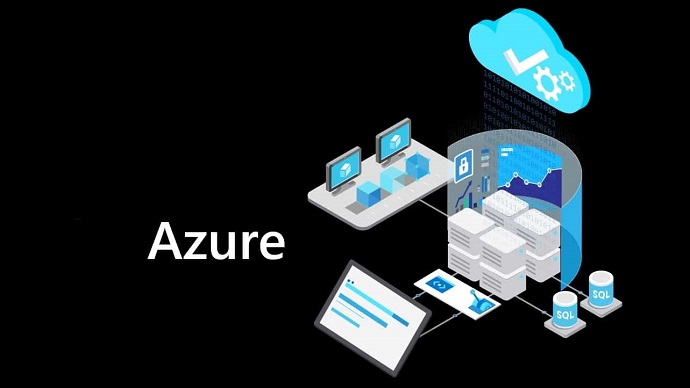Use VCE Exam Simulator to open VCE files

Anumber of key trends are driving the evolution of information technology (IT) today. New applications requiring global scale, social integration, and mobile capability are critical in many industries. The proliferation of devices such as smart phones and tablets is driving the need for applications and services delivery to nearly everywhere on the globe. The explosion of data and the insight that can be gained from the exponential growth in data is generating demand for enormous storage and analysis capability. These trends have triggered significant changes to how IT must be delivered, resulting in the evolution of cloud computing.
Cloud computing is delivered in many forms such as private cloud in an organization’s datacenter, public cloud in a provider such as Microsoft’s datacenter, or a multitude of service provider clouds from a range of different organizations. Each provides a different set of features, capabilities, cost points, and service level agreements (SLA).
Within this environment, organizations have a wide range of options for their cloud computing needs and an increasing challenge of how to manage a distributed, cloud-based infrastructure as well as their various applications and services. As a leading provider of on-premises software solutions and one of the largest global cloud providers, Microsoft has created a single integrated cloud platform to meet customer’s needs: the Cloud OS.
The Microsoft Cloud OS strategy can be summarized by the following quote from the white paper “Unified Management for the Cloud OS: System Center 2012 R2” published in October 2013:
“The Microsoft vision for a new era of IT provides one consistent platform for infrastructure, applications, and data: the Cloud OS. The Cloud OS spans your datacenter environments, service provider datacenters, and Windows Azure, enabling you to easily and cost-effectively cloud optimize your business.”
This strategy is unique in the industry as Microsoft is the only global provider of leading on-premises software for private cloud, large scale public cloud with Windows Azure, and a global service provider ecosystem.
The Cloud OS strategy provides a common identity, virtualization, management, development, and data platform across private cloud, public cloud, and service-provider cloud as illustrated in Figure 1-1.
The various combinations of private, public, and service provider clouds are commonly referred to as hybrid cloud architectures. The ability to both provide the various types of cloud infrastructure as well as the ability to manage resources across all of them requires an integrated cloud platform such as Microsoft’s Cloud OS comprised of Windows Server, Windows Azure, and System Center.
The key attribute of the Cloud OS vision is hybrid cloud architecture, in which customers have the option of leveraging on-premises infrastructure, Windows Azure, or Microsoft hosting-partner infrastructure. The customer IT organization will be both a consumer and provider of services, enabling workload and application development teams to make sourcing selections for services from all three of the possible infrastructures or create solutions that span them.
Starting from the bottom, the diagram in Figure 1-2 illustrates the cloud infrastructure level (public, private, and hosted clouds), the cloud service catalog space, and examples of application scenarios and service-sourcing selections (for example, a workload team determining if it will use virtual machines that are provisioned on-premises, in Windows Azure, or in a Microsoft hosting partner.) The Cloud OS strategy provides a common identity, virtualization, management, development, and data platform across private cloud, public cloud, and service provider cloud.
The benefits of this approach are that virtual machines, applications, and services can be hosted on the cloud that makes the most sense for each workload in terms of cost, capability, or SLA. Additionally, the Cloud OS enables “VM Mobility” as all three components (private, public/Azure, service provider) utilize the same underlying Windows Server 2012 R2 and Hyper-V infrastructure meaning that virtual machines can be moved to any of the cloud types without having to convert or modify them. The Cloud OS is an integrated cloud platform where System Center 2012 R2 is able to manage the private cloud as well as virtual machines, applications, and services hosted in Windows Azure or service provider clouds.
In the next several chapters we will outline how to use the Cloud OS to build a software-defined datacenter and private cloud with Windows Server, Hyper-V, and System Center as well as consume Windows Azure and service provider clouds by extending your datacenter and System Center management platform to those clouds. The end result will be a hybrid cloud architecture that enables applications, workloads, and services to be hosted on the cloud that makes the most sense for them while providing an integrated management capability across the hybrid cloud.

Top Training Courses











LIMITED OFFER: GET 30% Discount
This is ONE TIME OFFER

A confirmation link will be sent to this email address to verify your login. *We value your privacy. We will not rent or sell your email address.
Download Free Demo of VCE Exam Simulator
Experience Avanset VCE Exam Simulator for yourself.
Simply submit your e-mail address below to get started with our interactive software demo of your free trial.

